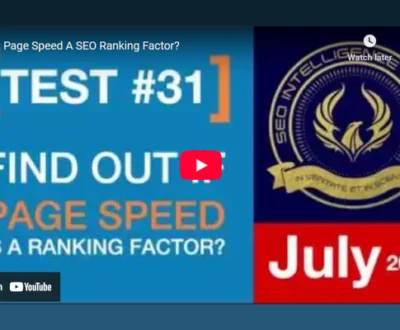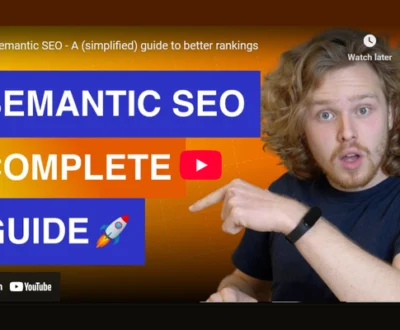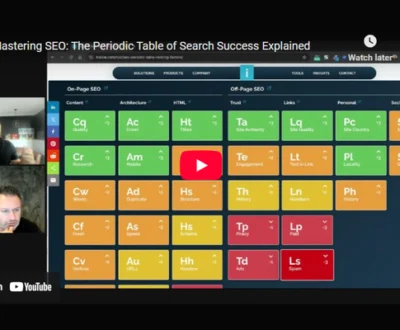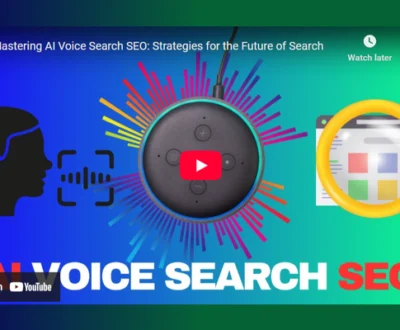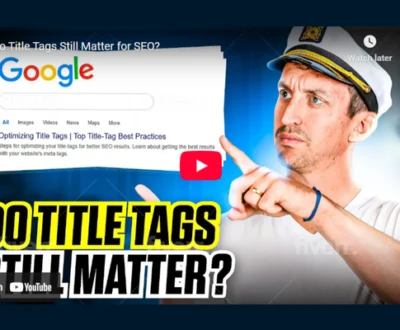I focus on crafting clear calls to action that boost on-page SEO by guiding users with concise, action-oriented language. Effective CTAs improve engagement metrics like time on page and reduce bounce rates, which search engines value. Strategic placement—especially above the fold or near relevant content—and visually distinct formats increase click-through rates. Aligning CTA messages with user intent and content guarantees relevance and higher conversions. Optimizing and testing these elements continuously can maximize results. Exploring these strategies reveals deeper insights into effective CTA use.
- Key Takeaways
- The Role of Calls to Action in Enhancing SEO Performance
- How Action-Oriented Language Drives Higher Conversion Rates
- Best Practices for Strategically Placing CTAs on Webpages
- Different Formats for Displaying Effective Calls to Action
- Crafting Clear and Compelling CTA Messages
- Measuring the Impact of CTAs on User Engagement Metrics
- Aligning CTAS With Content and SEO Strategy
- Optimizing and Testing Calls to Action for Maximum Results
- Frequently Asked Questions
- Final Thoughts
Key Takeaways
- Use clear, action-oriented language with strong verbs to encourage immediate user engagement and improve conversion rates.
- Position CTAs above the fold and near relevant content to increase visibility and maintain user interest.
- Design CTAs with contrasting colors and whitespace to enhance prominence and click-through rates.
- Align CTA messaging with user intent and incorporate targeted keywords to boost SEO relevance.
- Continuously test and optimize CTAs through A/B testing and performance metrics to maximize on-page SEO impact.
The Role of Calls to Action in Enhancing SEO Performance
Although calls to action (CTAs) might seem like simple website elements, they play a crucial role in enhancing SEO performance. Understanding CTA psychology helps me design buttons that influence user behavior positively, encouraging visitors to engage more deeply with the site.
Clear CTAs improve user experience by guiding visitors toward desired actions, such as signing up or making a purchase, which increases time spent on the page and reduces bounce rates—both critical SEO factors. CTAs that are shaped like buttons saw a 45% increase in clicks, emphasizing the importance of effective design elements.
Strategic placement of CTAs, especially at the end of product pages, can boost conversions by up to 70%, showing how user behavior directly impacts site metrics. Additionally, personalized CTAs outperform generic ones, making the interaction feel more relevant and increasing engagement.
When users respond to well-crafted CTAs, it signals to search engines that the site is valuable and user-friendly, which ultimately supports better rankings. As a result, integrating smart CTAs is essential for improving SEO through enhanced user behavior and engagement.
How Action-Oriented Language Drives Higher Conversion Rates
Building on the impact of well-placed calls to action, the language used within these CTAs plays a notable role in driving user engagement and conversions.
Using strong action verbs such as “Get,” “Join,” or “Download” encourages immediate response by clearly directing users on what to do next. These verbs, combined with concise phrasing in the active voice, make CTAs more compelling and effective, boosting conversion rates by over 120% compared to passive language.
Additionally, incorporating emotional triggers in your CTA text can connect with users on a deeper level, prompting action by appealing to their feelings or desires. Words that evoke urgency or personal benefit further amplify this effect. Understanding your target audience’s motivations and preferences ensures that these triggers resonate more effectively, tailoring CTAs to increase engagement target audience insights.
Consequently, crafting CTAs with clear, action-oriented language and emotional triggers not only guides users efficiently but also markedly improves conversion outcomes, making your on-page SEO efforts more successful.
Best Practices for Strategically Placing CTAs on Webpages
When placing CTAs on webpages, it’s important to contemplate their location for maximum impact.
Positioning them above the fold captures immediate attention, while placing them near relevant content keeps users engaged as they read.
Additionally, using design elements like color contrast and whitespace helps enhance CTA visibility and encourages clicks.
Optimal CTA Locations
Since effective calls to action (CTAs) directly influence user engagement and conversions, placing them strategically on your webpages is essential.
I rely on user journey mapping to pinpoint where visitors are most likely to take action, aligning CTA timing strategies accordingly. For example, placing a CTA above the fold guarantees immediate visibility, capturing attention without scrolling.
In longer content, I insert CTAs after key points and near exit points to maintain engagement throughout the visit. Contextual placement near relevant information also reinforces the CTA’s purpose, making it more compelling.
Enhancing CTA Visibility
Although placing CTAs strategically is important, enhancing their visibility on the page is what truly drives user interaction. To make your calls to action stand out, focus on these key elements:
- Use high-contrast CTA color schemes that comply with accessibility standards, ensuring buttons don’t blend into the background. This immediately grabs attention and improves readability.
- Opt for distinct button shapes, like rounded corners or subtle shadows, to separate CTAs visually from surrounding content. This strengthens visual hierarchy and guides users naturally toward action.
- Maintain ample negative space around CTAs, avoiding clutter and allowing the eyes to focus on the button. Proper margins and padding also improve mobile usability.
Combining these practices enhances user engagement by making CTAs clear, accessible, and inviting to click.
Different Formats for Displaying Effective Calls to Action
When it comes to displaying effective calls to action, using anchor text CTAs can seamlessly guide users within your content without disrupting their reading flow.
Visual CTA elements, like buttons and banners, draw attention through design and placement, making actions clear and inviting.
Additionally, strategically timed popups can capture user interest at key moments, but they must be used carefully to avoid annoyance.
Anchor Text CTAs
To create effective anchor text CTAs, you need to evaluate different formats that grab attention and prompt action. Through anchor text analysis and optimization techniques, you can improve both user engagement and SEO performance.
Here are three key formats to take into account:
- Action-Oriented Verbs: Start with verbs like “Discover” or “Download” to encourage clicks.
- Contextual Relevance: Confirm the anchor text matches the linked content, providing clarity and improving user experience.
- Link Diversity: Use varied anchor texts to avoid over-optimization and maintain a natural link profile.
Using these formats, you not only boost click-through rates but also enhance your site’s authority and ranking.
Proper optimization confirms your anchor text CTAs contribute effectively to your overall SEO strategy.
Visual CTA Elements
Anchor text CTAs play an essential role in guiding users through your content, but visual elements add another layer of influence by capturing attention in more immediate ways.
Effective visual CTAs rely on strong visual design, including button size, shape, and especially color. Applying color psychology helps influence user decisions by choosing hues that stand out and evoke the right emotions. For instance, contrasting colors make buttons pop against the background, increasing visibility.
Consistency in styling across your site builds a cohesive look, while responsive design guarantees CTAs work well on all devices. Formats like hero section buttons or floating CTAs keep calls to action within easy reach, boosting engagement.
Prioritizing text-based CTAs also helps search engines index your calls to action, enhancing SEO alongside user experience.
Popup CTA Usage
Although popup CTAs can sometimes interrupt the user experience, they remain a powerful tool for capturing attention and guiding visitors toward specific actions.
Effective popup design combines clear messaging with urgency tactics to boost conversions. Here are three key elements I focus on when crafting popup CTAs:
- Action-oriented language: Using verbs like “Get” or “Start” motivates immediate responses.
- Urgency tactics: Incorporating timers or limited-time offers encourages quicker decisions.
- Personalization: Tailoring messages based on user behavior or location increases relevance and engagement.
Crafting Clear and Compelling CTA Messages
Crafting clear and compelling CTA messages demands precise language that leaves no room for confusion about the desired action. I focus on user-centric design by using direct, strong verbs like “download” or “shop” to guide users clearly.
Concise language guarantees the message is quickly understood, which is vital in keeping user attention. To provide compelling value, I highlight benefits that solve user problems and emphasize tangible results they can expect.
This approach not only aligns CTAs with the content’s purpose but also addresses specific user needs, increasing the likelihood of engagement. Customization plays a key role; tailoring messages based on audience insights makes CTAs more relevant and effective.
Measuring the Impact of CTAs on User Engagement Metrics
When I measure the impact of CTAs on user engagement, I focus on several key metrics that reveal how effectively these prompts guide visitors toward desired actions.
Click through analysis is essential for understanding if users respond to CTAs, with strong campaigns often achieving over a 2% click-through rate. Conversion optimization is the next step, tracking how many visitors complete actions like sign-ups or purchases, usually ranging from 2% to 5% on landing pages.
Finally, I monitor bounce rates and session behavior to see if CTAs help retain users and encourage further exploration.
Here are the three primary metrics I use:
- Click-through rates (CTR) to gauge initial CTA interaction.
- Conversion rates to measure completed goals triggered by CTAs.
- Bounce rates and pages per session to assess user retention and engagement.
Aligning CTAS With Content and SEO Strategy
Because effective calls to action (CTAs) must resonate with both your content and SEO goals, aligning them strategically is critical for maximizing their impact. Content alignment guarantees CTAs match user intent, making the action feel natural and relevant. Integrating keywords into CTAs supports SEO by improving visibility and driving targeted traffic. Placing CTAs in logical, visible spots within content enhances engagement, while tailoring messages to audience segments boosts conversion rates. Here’s a simple way to approach this alignment:
| Aspect | Content Alignment | SEO Strategy |
|---|---|---|
| Relevance | Matches user intent and topic | Uses targeted keywords |
| Placement | Logical, context-driven locations | Optimized for visibility |
| Messaging | Clear benefits and action steps | Includes SEO-friendly language |
| Personalization | Tailored to audience needs | Supports local or niche SEO |
| User Experience | Enhances readability and engagement | Mobile-friendly, fast loading |
Aligning CTAs this way creates synergy, driving better user interaction and search rankings.
Optimizing and Testing Calls to Action for Maximum Results
After confirming your calls to action align well with your content and SEO strategy, the next step is to optimize and test them to achieve the best possible results.
I recommend focusing on key elements like urgency tactics, button colors, and mobile responsiveness. Using A/B testing, you can compare CTA variations to see which wording or design drives more clicks.
It’s also essential to meet accessibility standards, making sure all visitors can interact with your CTAs easily. To refine your approach, gather visitor feedback and analyze performance metrics regularly.
Here are three steps I follow to optimize CTAs:
- Conduct A/B testing on wording, placement, and button colors to identify the most effective combinations.
- Confirm CTAs are mobile-responsive and comply with accessibility standards for all users.
- Monitor engagement through performance metrics and adjust CTAs based on visitor feedback to improve conversions continuously.
Frequently Asked Questions
How Do CTAS Affect Website Loading Speed?
CTAs themselves don’t slow your site, but poor CTA placement or design—like heavy images or scripts—can. I always focus on clean, optimized CTAs to keep loading speed fast and user experience smooth.
Can CTAS Improve Local SEO Rankings?
Like a compass guiding a traveler, CTAs boost local search by driving user engagement. They prompt actions—like clicks or calls—that signal popularity, helping your business stand out and improve local SEO rankings effectively.
What Tools Help Analyze CTA Performance?
I rely on HubSpot and Semrush to analyze CTA performance, combining A/B testing results with user feedback. These tools help me understand clicks, views, and optimize CTAs effectively to boost engagement and conversions.
Should CTAS Differ for Mobile Versus Desktop Users?
I believe CTAs should differ for mobile versus desktop users to enhance mobile optimization and user experience. Mobile users need simpler, thumb-friendly CTAs, while desktop users benefit from detailed options and strategic placements tailored to their browsing habits.
How Frequently Should CTA Designs Be Updated?
I update CTA design every 3-6 months to keep user engagement high and maintain strong visual impact. Regular A/B testing helps me spot what works best, so I adjust designs based on real performance insights.
Final Thoughts
Incorporating clear calls to action is like adding a secret ingredient that can dramatically improve your SEO and user engagement. By using action-oriented language and placing CTAs thoughtfully, you guide visitors toward meaningful interactions. Remember to align your CTAs with your overall content and SEO goals, then test and optimize them regularly. This strategic approach guarantees your calls to action not only boost conversions but also enhance your page’s search performance effectively.
Windee Tan is a seasoned SEO Specialist with over a decade of experience helping businesses grow their organic visibility through data-driven strategies. He specializes in technical SEO, content optimization, and local search, with deep knowledge of tools like GA4, GSC, SEMrush, and Screaming Frog. Windee is passionate about translating complex SEO insights into practical tactics that drive real-world results. When he's not auditing sites or crafting keyword strategies, he’s exploring the latest trends in AI, digital marketing, and productivity.
About this blog
We are a digital marketing company with a focus on helping our customers achieve great results across several key areas.
Request a free quote
We offer professional SEO services that help websites increase their organic search score drastically in order to compete for the highest rankings even when it comes to highly competitive keywords.
Subscribe to our newsletter!
More from our blog
See all postsRecent Posts
- Writing Clear Calls to Action That Boost On-Page SEO 21 August 2025
- Why Word Count Still Matters in On-Page SEO Today 20 August 2025
- Why Site Speed Is Critical for On-Page SEO Success 19 August 2025



